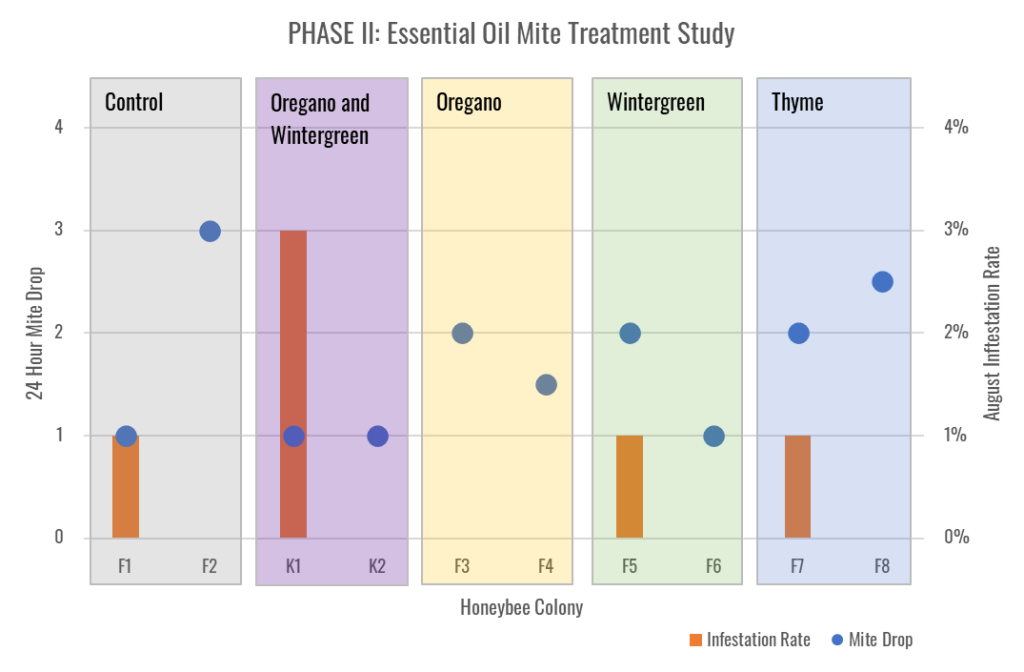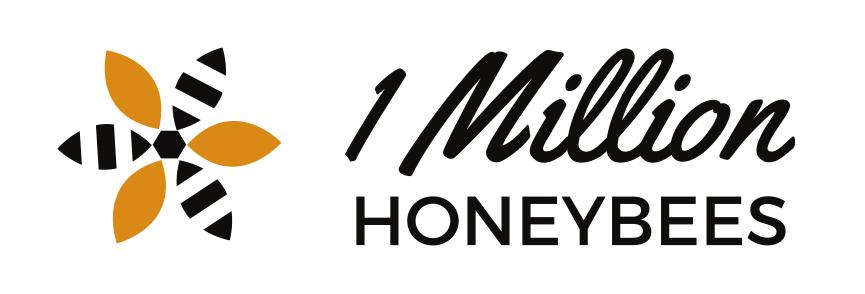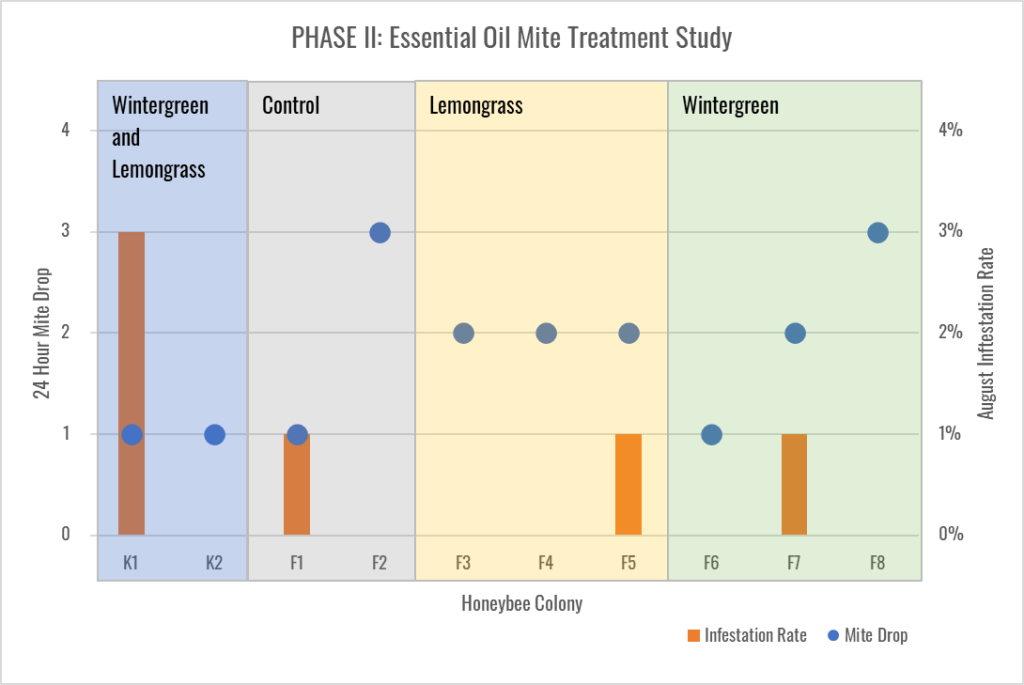Here's what's keeping us buzzing...
No upcoming events
Phase II: Essential Oil Mite Treatment Study

Introduction
During the summer of 2022, we trialed a new potential treatment for the Varroa Destructor mite using essential oils. Varroa destructor is one of the most influential stressors on honeybee colonies around the globe. All honeybee colonies except for places such as Australia, New Zealand and Hawaii will have varroa mite infestations. This parasitic mite not only reduces the lifespan on a honeybee but acts as a vector for viruses and disease. By using essential oils as an evaporative treatment, it is thought the vapours can confuse the mites (both varroa and tracheal mites) in finding their way to their hosts and in the process become disoriented and fall through the screened bottom board where they cannot climb back up to where the bees are located. This theory is not proven and with the exception of thyme, we have found a dearth of information to back up the effects of essential oil vapours.
Any natural approach to dealing with these parasites would be welcome news. This study is Phase II of III in our essential oil study. Phase I in 2021 proved inconclusive but may have been too weak a treatment and/or too late in the spring season. For this phase, we increased the dosage by 50% and initiated the treatment in June. Unfortunately the results also showed no significant change in mite loads towards the end of the summer. On the plus side, only 1 colony was above the critical mite infestation rate of 2% and was given a second treatment of formic acid and the rate was later reduced to 0% Phase III will involve a more intricate slow release system and a higher dose - after the honey flow and our organic treatments of formic acid are applied. Thyme did show the highest drop however it was in-line with the drops of our control hives.
Material and Methods
Approximately 15 ml of either Oregano oil, Wintergreen Oil, Thyme Oil or both Wintergreen and Oregano oils (1/50 solution of essential oil to mineral oil) were applied to microfibre fabric and placed in the top box of several hives in our Apiaries. Mite drops were measured 72 hours after treatment and compared with 2 control hives. In mid August infestation levels were measured using our bee scanner app to determine the mite infestation rate.
Results
Mite drops can be an indicator of how effective a treatment is while also judging levels of infestation. Mites fall through the screened board and they are counted after 72 hours and a 24 hour average is determined. Hives that received both oregano oil and wintergreen oil treatments, colonies K1 and K2, had 24 hour mite drops of 1 mite each at our Kilbride location. At our Flamborough location, hives that received wintergreen only, colony F5 had a drop of 2 and F6 had 1. Of those that received oregano oil only, F3 and F4 had counts of 2 and 1.5 respectively. Those received thyme oil only, F7 and F8 had drops of 2 and 2.5 respectively. The control hives, F1 and F2 had counts of 1 mite and 3 mites respectively.
Because we take a more pre-emptive approach to dealing with mite loads rather than wait for critical thresholds to be met, we compared the infestation rates after the gold standard organic treatment of formic acid. Notably infestation rates throughout the summer remained fairly consistent. In August when mite reproduction is at its highest, after formic treatment infestation rates were at 0 percent for K2, F8, F6, F4, F3 and F2. Colonies F7, F5, F1 had infestation levels of 1% and colony K1 had a level of 3 percent. With the exception of K1, all colonies were below critical threshold levels of 2%. All hives received the same does of formic acid with the exception of K1 that received 2 doses of formic acid to take down the higher infestation.
Conclusions
Essential oils are thought to be beneficial to honeybees via their influence on their digestive processes and, consumption of small amounts has proven beneficial to overall health and possibly mite loads. However, little is known how their vapours may directly combat the varroa mite. Thymol has been been quoted as being somewhat effective. In this phase II study, there was no significant change in infestation rates or mite drops after the treatments. That is not to say the treatments were of no value, just no conclusion can be made since there are so many other variables at play (colony size, colony genetics, hygienic behavior, evaporation rate, dosage rate, ventilation rates, etc.). None of the colonies appeared to suffer any ill effects from the treatment at this dosage rate.
Phase III will use a slow release micropore pad late in the season in 2023. We are choosing this time of year because it is when mite loads tend to rebound after formic treatments. Longer summers in our location in Southern Ontario have led to this phenomenon and a gentle, natural treatment to mitigate this would be ideal. We will judge the effectiveness of this study by comparing mite infestation rates before and two weeks after treatment. If this approach proves effective, it would be a welcome addition to treating for mites in the late summer as there are few options available during that time of year.
We would like to thank Andrea Were for her assistance in the treatments.

